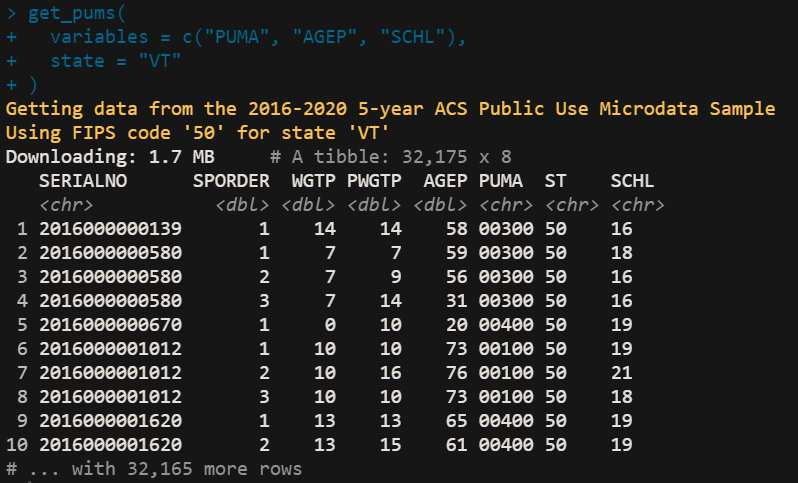There are a lot of changes & new features coming to #rstats #tidycensus in April; you can try out the new features now with `remotes::install_github("walkerke/tidycensus")`. Read on in this thread to get up to speed on the updates: github.com/walkerke/tidyc… 





`get_acs()` and `get_pums()` now both default to the brand-new 5-year American Community Survey estimates. If you need other years, be sure to use the `year` argument to get data for that year 



However, the 1-year ACS experimental estimates _are not_ available in tidycensus, and requesting them will throw an error. If you need 1-year ACS data, be sure to explicitly request data for a different year using the `year` argument 



Analysts using the 5-year ACS detailed tables are commonly confused when variables come back as NA for a given geography. A new geography column in `load_variables()` output tells you the smallest geography at which a given variable is available! 

`get_acs()` also now supports the ACS Comparison Profile, which is great for time-series analysis and making appropriate (e.g. inflation-adjusted) comparisons. Look up variable codes for 2016-2020 with `load_variables(2020, "acs5/cprofile")` 

I've tweeted this before, but it's worth repeating: the new `as_dot_density()` function makes data prep for dot-density maps a breeze. Try modifying the example in the docs (?tidycensus::as_dot_density) for a location of your choice, and try out the dasymetric option too! 

I'm in the process of integrating all of these updates into my book "Analyzing US Census Data" (walker-data.com/census-r/) so keep an eye out there for full documentation. These updates should be on CRAN sometime in April.
• • •
Missing some Tweet in this thread? You can try to
force a refresh
















